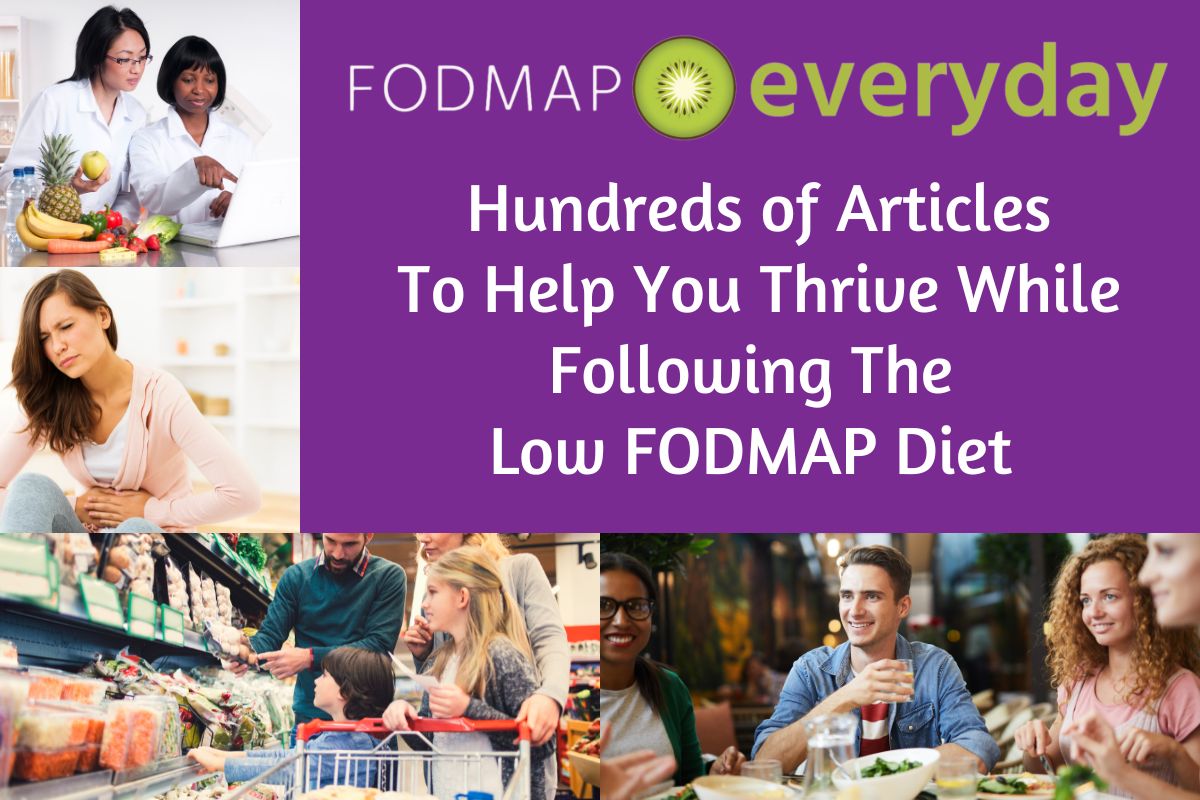There is no getting around the fact that the low FODMAP diet is nuanced and complex. It is very easy to have misunderstandings. Here are some misconceptions that we encounter again and again. Let’s bust some FODMAP myths!
MYTH: The Low FODMAP Diet Is Only A Short Term Diet

We hear people say this all the time – even doctors. Monash University has language on their website and across their platforms that is not always clear and even contradicts itself at times; (perhaps that’s where the confusion comes from for others). Here’s the deal: the low FODMAP diet is three phases. The initial Elimination Phase is the most restrictive and meant to be brief. When people say the low FODMAP diet is meant to be short term they are properly addressing just this first phase – not the whole diet as a concept.
During the second Challenge Phase, you are adding FODMAP containing foods back into your diet, and by the time you get to the last, third Integration Phase, you are eating broadly with FODMAPs added back into your diet and this part of the diet is long-term. It will also evolve over time. Your GI tract is not static, and neither are your food reactions. It is suggested that you reintroduce, and re-challenge “failed” foods down the road. The goal is to eat as broadly as possible without triggering symptoms.
MYTH: The Low FODMAP Diet Is Just Another Fad Diet

Nothing could be further from the truth. The low FODMAP diet is clinically proven in scientifically rigorous trials to minimized or eliminate IBS (irritable bowel syndrome) symptoms in up to 75% of those suffering, when approached along with a Registered Dietitian (RD). The clinical test results are what distinguishes it from fad diets such as paleo, Whole30, keto and others.
MYTH: I Can Successfully Follow The Low FODMAP Diet By Following The Piece Of Paper The Doctor Gave Me Of High And Low FODMAP Foods

Every single day we hear from many of you who are embarking on the diet, armed with such a list. There are several problems with these lists. First of all, the diet was always meant to be undertaken along with a registered dietitian (RD).We know that your doctor probably didn’t tell you this.
And that list? We have yet to see one that is helpful. They are very high level, labeling foods like almonds, bananas and broccoli as high FODMAP. Folks think they cannot eat these food, which leads many to giving up before starting, or “failing” and not being able to “follow” the diet.
The fact is that doctors are not trained in nutrition AND are typically not trained in the low FODMAP diet. That is where FODMAP trained dietitians come in. Please read our articles, The Role Of The Dietitian vs. The Gastroenterologist, and Have IBS? Top Reasons To Work With A Dietitian. And immediately download the Monash University and FODMAP Friendly smartphone apps. They are the originators of the diet and are considered the primary and therefore the most accurate and reliable resources.
MYTH: Anyone Can Follow The Low FODMAP Diet

There are people who should not follow the low FODMAP diet. If someone has a history of an eating disorder, or disordered eating patterns, the diet might be contraindicated. In addition, some people should follow a modified approach, such as children, pregnant women, and vegans. A RD should always be consulted.
MYTH: I Can Try The Low FODMAP Diet To See If It Works

The low FODMAP diet should not just be “tried on for size”. It is a medically prescribed diet, and no one should self-diagnose and/or self-prescribe.
MYTH: You Have To Follow The Low FODMAP Diet Strictly

Sometimes following the low FODMAP diet strictly is contraindicated. A dietitian can assess whether the diet is right for you, or not, and if it is, how YOU should be following it. IBS presents differently in every person, and everyone’s approach to the diet will be unique as well. Following the low FODMAP diet does have to be structured, however, or you will never collect the data about your own FODMAP tolerances, which is what you’re trying to collect during Elimination and Challenge Phases. A RD can help you navigate.
MYTH: The Low FODMAP Diet Is Gluten-Free

The low FODMAP diet is not gluten-free. The confusion arises because fructans, which are part of the “O” FODMAPs, are present in wheat and other gluten containing ingredients, such as rye and barley. By avoiding these ingredients and their gluten, you can also avoid fructans, but it is not the only way to minimize fructan consumption.
The low FODMAP diet is serving size dependent. One look at the apps and you will see that there are many foods that contain wheat that have low FODMAP serving sizes, such as wheat-based sandwich bread, traditional pasta, sourdough breads, and more. We know it can appear confusing at first, hence working with a FODMAP trained RD is suggested.
MYTH: The Low FODMAP Diet Is Dairy-Free

The low FODMAP diet is not dairy-free; it is lower in lactose. Dairy and lactose are not the same thing. In fact, there are many dairy products that have low FODMAP serving sizes such as cheddar, feta, brie, heavy cream, ice cream, cream cheese, cottage cheese, and more.
MYTH: The Low FODMAP Diet Is Lactose-Free

The low FODMAP diet is not lactose-free; it is lower in lactose. Please read our article, Lactose, Dairy & the Low FODMAP Diet.
MYTH: The Low FODMAP Diet Is Sugar-Free

The low FODMAP diet is not sugar-free. In fact, white sugar contains no FODMAPs whatsoever. You can read more in our article, Explore An Ingredient: Sugar
And Don’t Miss These Articles If You Have IBS

Our team of low FODMAP and IBS trained dietitians and healthcare experts have written 100’s of Wellness Articles to help you THRIVE.







